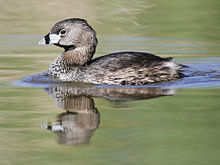 |
| Striped Possum, illustrated by Joseph Wolf, 1858. |
Check out my other blog at diyakrishnan.blogspot.com. Check out my blog on book reviews and my own writings and the one on History
Thursday, October 4, 2018
Striped Possum
The striped possum, resembling a black-and-white squirrel, lives in Australia and Paupa New Guinea.
It has a prehensile tail, and one of its fingers is much longer than the other. It hunts for its food using percussive foraging- like the Aye-aye. It feeds on beetles and caterpillars from bark. This leads to the inference that the Striped Possum is literally the mammalian woodpecker.
Aye-Aye
The aye-aye, the largest nocturnal primate in the world, lives exclusively in Madagascar.

It has rodent-like teeth which never stop growing, and a thin middle finger. It gets its food in an unusual way, shared only by the striped opossum. This is called percussive foraging- it involves gnawing holes into the wood with its incisors and then using that finger to take out grubs from it.
An endangered species, the Aye-aye was once believed to be ill-omened, as its appearance was considered to predict death. As a result, they were killed by people. They are also killed by farmers to protect crops.

It has rodent-like teeth which never stop growing, and a thin middle finger. It gets its food in an unusual way, shared only by the striped opossum. This is called percussive foraging- it involves gnawing holes into the wood with its incisors and then using that finger to take out grubs from it.
An endangered species, the Aye-aye was once believed to be ill-omened, as its appearance was considered to predict death. As a result, they were killed by people. They are also killed by farmers to protect crops.
Sunday, September 2, 2018
Pied-billed grebe
The Pied-billed Grebe is a species in the grebe family of birds. It is located throughout the Americas.
These species of grebes are stock and have a short neck and beak. They are mostly brown, with a darker back. This serves as camouflage in the the marshy areas which it lives in. Like all other grebes, it has large feet and lobbed toes, meaning each toe is separate on the foot.
These species of grebes are stock and have a short neck and beak. They are mostly brown, with a darker back. This serves as camouflage in the the marshy areas which it lives in. Like all other grebes, it has large feet and lobbed toes, meaning each toe is separate on the foot.
Friday, August 31, 2018
Ardea insignis
Also known as the White-bellied Heron, this species is mostly dark gray, with white underparts. Its bill is black and greenish near its base. When disturbed, it usually giver out a croak.
Imperial is from Latin word Imperium, meaning supreme power.
Friday, April 27, 2018
Pink fairy armadillo
The Pink Fairy Armadillo (Chlamyphorus truncatus) is the smallest species of armadillo. It lives in sandy plains and grasslands of Argentina.

Unlike other species of armadillo, Pink Fairy Armadillos have a flexible shell attached to a dorsal membrane. They also have small eyes and silky fur. Their fine hair is useful in environments with variable temperatures- it is used to conserve heat while outside the burrow, since they are nocturnal and night temperatures in Argentina can get quite low.
The Pink Fairy Armadillo is 3.5-4.5 in long and usually weighs about 120g.

Unlike other species of armadillo, Pink Fairy Armadillos have a flexible shell attached to a dorsal membrane. They also have small eyes and silky fur. Their fine hair is useful in environments with variable temperatures- it is used to conserve heat while outside the burrow, since they are nocturnal and night temperatures in Argentina can get quite low.
The Pink Fairy Armadillo is 3.5-4.5 in long and usually weighs about 120g.
Tuesday, April 17, 2018
Giant Golden Crowned Flying Fox
The Giant Golden Crowned Flying Fox(Acerodon jubatus), an endangered megabat, is the largest living bat in the world. It lives in the Philippines and its wings are so long that they are usually seen with their wigs wrapped around the body. Its wingspan is 1.5–1.7 m and it weighs 0.7–1.2 kg (1.5–2.6 lb).
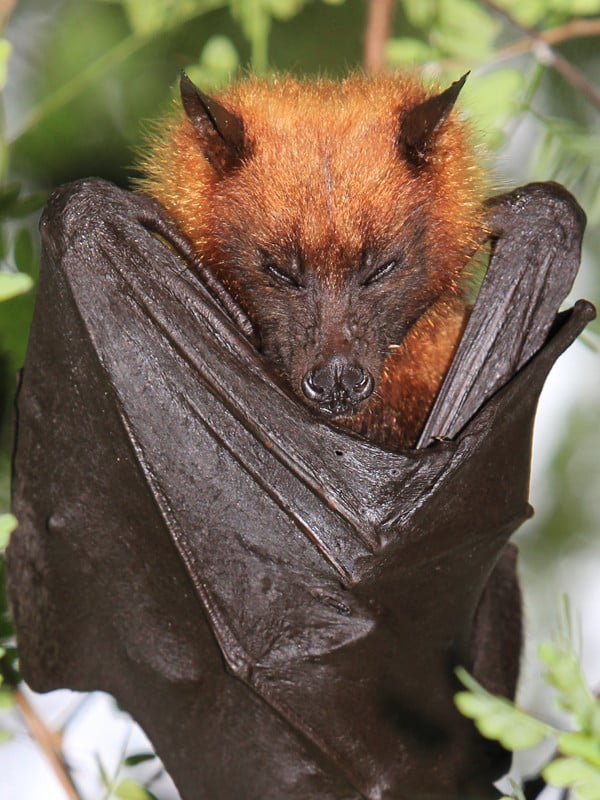 |
| The face looks like a fox! |
Like all other fruit bats, the Giant Golden Crowned Flying Fox feeds on fruit. It hunts in the night and they may travel as much as 25mph while searching for food. They also like to take long baths, using their wings to scoop up water and wash over themselves.
https://www.batworlds.com/giant-golden-crowned-flying-fox
https://www.batworlds.com/giant-golden-crowned-flying-fox
Monday, March 19, 2018
Solenodon
Solenodons are insectivorous mammals from the family Solenodontidae. They are nocturnal and venomous. Only two species survive- the Cuban solenodon (Solenodon cubanus), and the Hispaniolan solenodon (Solenodon paradoxus).
In 2016, it was confirmed that they belonged to an evolutionary branch that split from hedgehogs and shrews before the K-T extinction.

These creatures have several unusual traits: their teats are located on their bottoms, and their saliva are venomous.They live in bushy areas in forests,hiding in burrows or hollow logs.
Both species were thought to be extinct, until a Cuban Solenodon was found in 2003. The Hispaniolan solenodon was assumed extinct because of its elusive behavior instead of low numbers. Both species are currently endangered.
In 2016, it was confirmed that they belonged to an evolutionary branch that split from hedgehogs and shrews before the K-T extinction.

These creatures have several unusual traits: their teats are located on their bottoms, and their saliva are venomous.They live in bushy areas in forests,hiding in burrows or hollow logs.
Both species were thought to be extinct, until a Cuban Solenodon was found in 2003. The Hispaniolan solenodon was assumed extinct because of its elusive behavior instead of low numbers. Both species are currently endangered.
Thursday, March 15, 2018
Greater sage-grouse
The greater sage-grouse (Centrocercus urophasianus) is the largest grouse in North America. Before 2000, it was referred as simply the Sage-grouse. In that year, the Gunnison sage-grouse became a separate species.
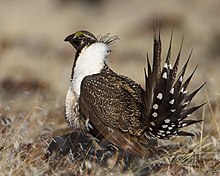
Adults have a long, pointed tail and feathers on its toes. Adult males have a yellow patch above its eyes and a white breast. During courtship, the males two yellowish sacs inflate for display.

Adults have a long, pointed tail and feathers on its toes. Adult males have a yellow patch above its eyes and a white breast. During courtship, the males two yellowish sacs inflate for display.
Saturday, February 24, 2018
Vaquita
 The Vaquita is a species of porpoise native to the Gulf of California. In Spanish, vaquita means little cow. It is not only the world's smallest cetacean, but also the rarest. Less than 30 individuals remain, The species will be extinct until drastic acton is taken.
The Vaquita is a species of porpoise native to the Gulf of California. In Spanish, vaquita means little cow. It is not only the world's smallest cetacean, but also the rarest. Less than 30 individuals remain, The species will be extinct until drastic acton is taken.This species is distinguished from other species by the dark rings surrounding their eyes and patches on their lips. Their backs have a dark shade of grey that lightens as they get older. Female Vaquitas tend to grow larger than males.
Monday, February 19, 2018
Vanzolini’s bald-faced saki
The Vanzolini's bald-faced saki is a New World Monkey that lives in Western Brazil. It was assumed to be extinct until 2017, when it was rediscovered. Unlike other monkeys, it lacks a prehensile tail that allows it to easily swing through trees. Instead, they run on all fours across thin branches.
https://news.nationalgeographic.com/2017/08/saki-vanzolini-monkey-amazon-rainforest-video-spd/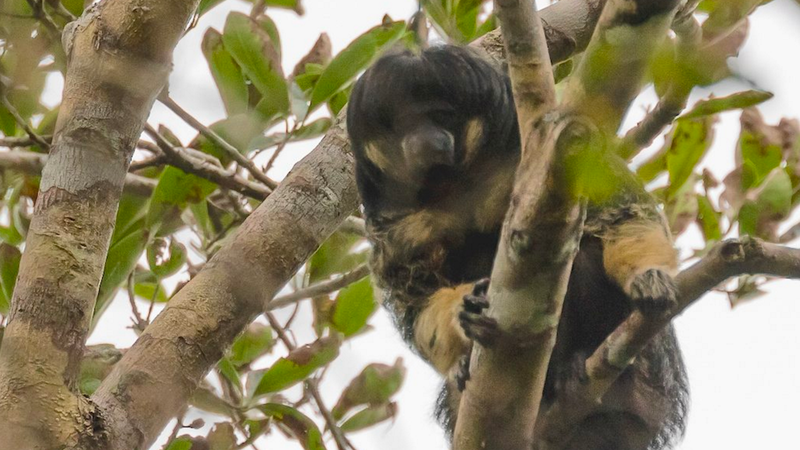
https://news.nationalgeographic.com/2017/08/saki-vanzolini-monkey-amazon-rainforest-video-spd/

Thursday, February 15, 2018
Terror skink
The Terror skink is a skink exclusively found in New Calendonia. It was assumed to be extinct until 1993, when the species was rediscovered. It is 50 cm in length, making it the second largest living reptilian predator on the island. It has curved teeth, suggesting predatory habits. This is unusual for skinks, which are omnivorous.
Wednesday, February 14, 2018
Night parrot
The night parrot (Pezoporus occidentalis) is a parrot native to Australia. It is known as being one of the most elusive birds in the world. It was known to be extinct since 1912.
However, the bird was sighted again in 1979. The bird's population size is unknown, though based on records it is thought to number between 50 and 249 mature individuals.

However, the bird was sighted again in 1979. The bird's population size is unknown, though based on records it is thought to number between 50 and 249 mature individuals.

Tuesday, February 13, 2018
Red Colobus
Red colobuses are Old World monkeys of the subgenus Piliocolobus in the genus Procolobus.
They are found throughout Sub-Sahara Africa and prefer humid areas. However, the Zanzibar Red Coulobus , as pictured below lives in coastal thickets. Red colobuses are also highly sensitive to hunting and habitat destruction,and, of all 10 species, only the Central African red colobus (Procolobus foai) is not endangered.
Monday, February 12, 2018
Eriovixia gryffindori
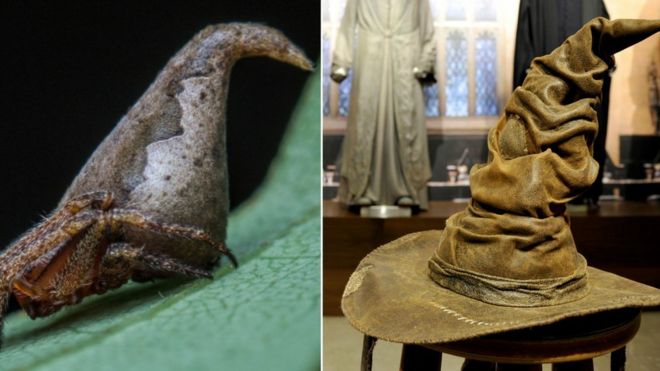 The Eriovixia gryffindori, known as the sorting hat spider, bears an uncanny resemblance from the sorting hat from Harry Potter. It was discovered in 2017 in the western Ghat regions of India and was named after Godric Griffindor, the fictional owner of the hat. To hide from its predators, it mimics dried foliage. Not surprisingly, the find did not go unnoticed by JK Rowling, the author of the books.
The Eriovixia gryffindori, known as the sorting hat spider, bears an uncanny resemblance from the sorting hat from Harry Potter. It was discovered in 2017 in the western Ghat regions of India and was named after Godric Griffindor, the fictional owner of the hat. To hide from its predators, it mimics dried foliage. Not surprisingly, the find did not go unnoticed by JK Rowling, the author of the books.Sunday, February 11, 2018
Uakari
Uakaris are unusual among primates because their tail length is substantially shorter than its body length. They have thick, dense fun on their bodies, but their heads are bald. These heads resemble skulls due to a lack of subcutaneous fat. 

Sunday, January 7, 2018
Nimba otter-shrew
The Nimba otter-shrew lives exclusively in the Mount Nimba region in west Africa. It has a fleshy nose, round head, and a long tail. Most of its eyes and much of its ears are covered with dark fur. It is nocturnal, feeding on crabs, water insects, small fish, and similar prey along river banks. It digs a short nesting burrow in soft soil.
Subscribe to:
Comments (Atom)

